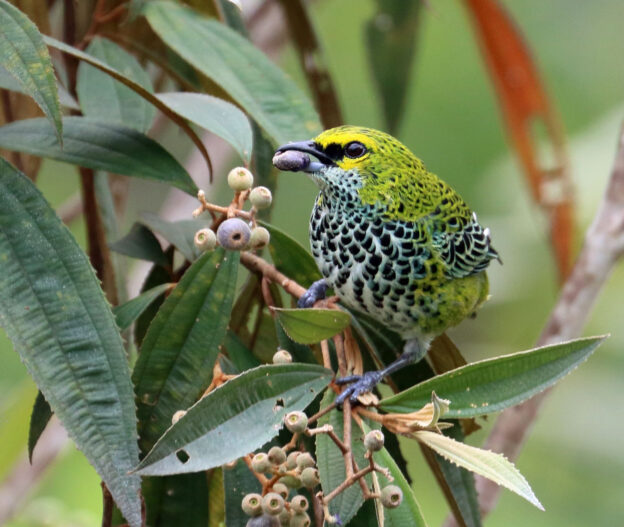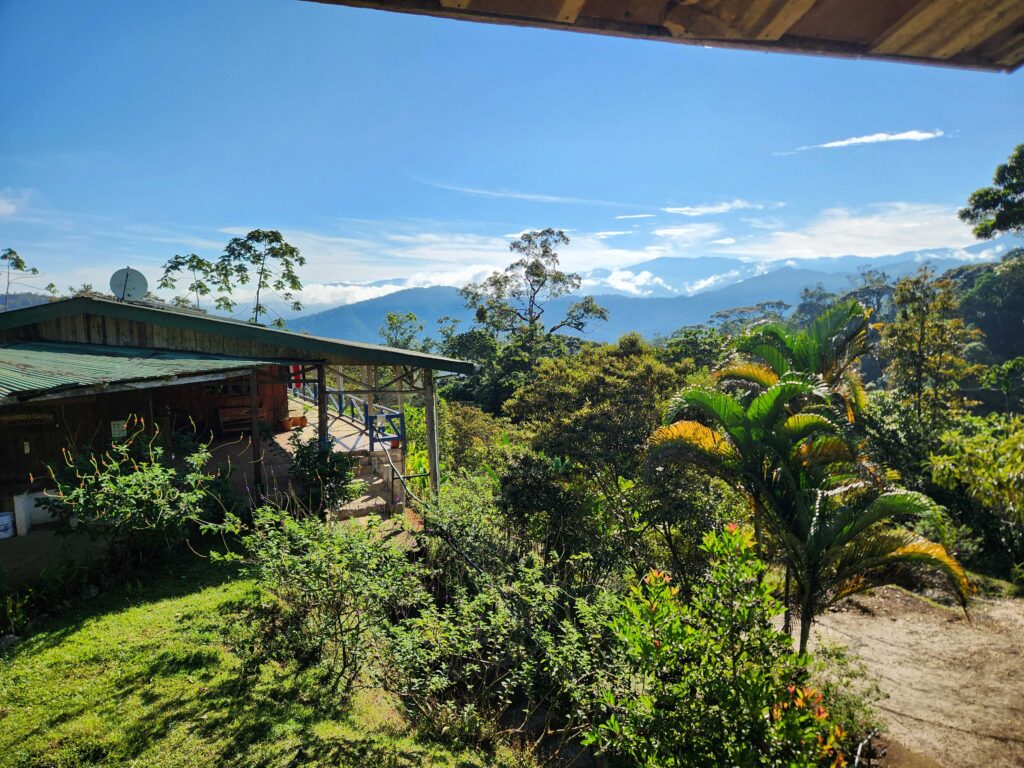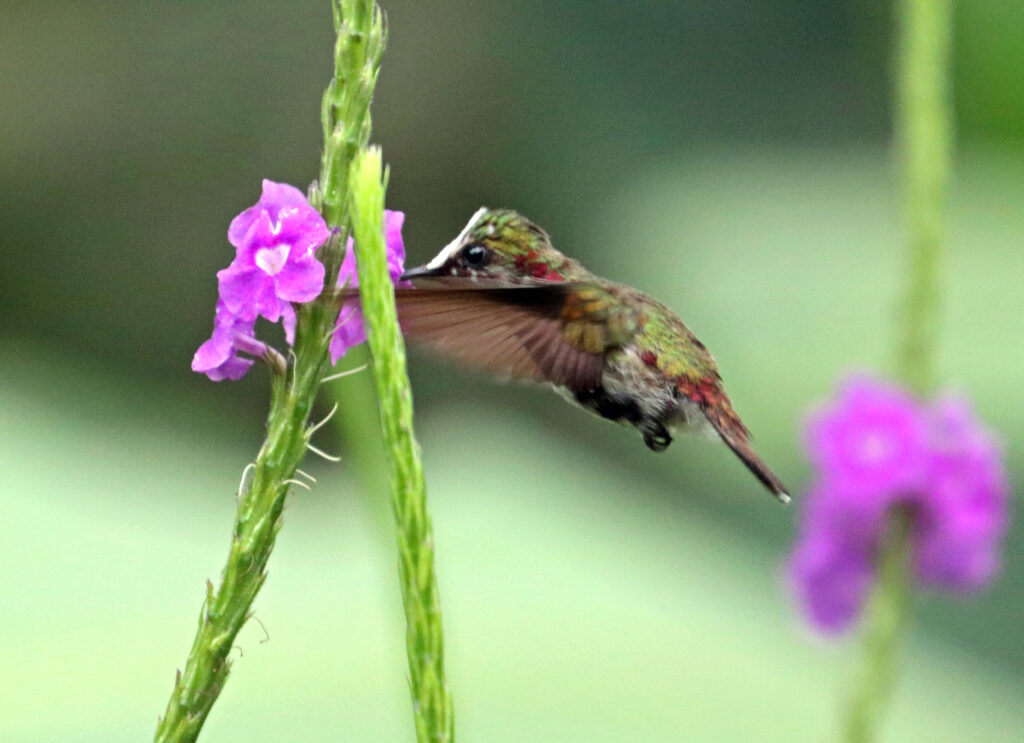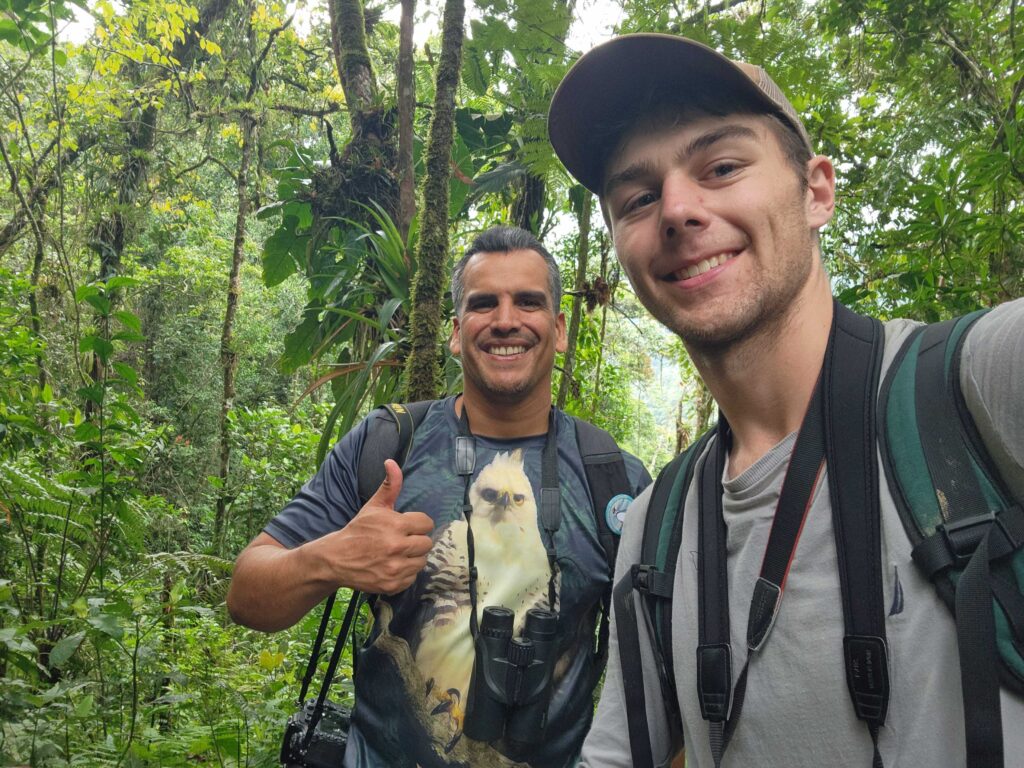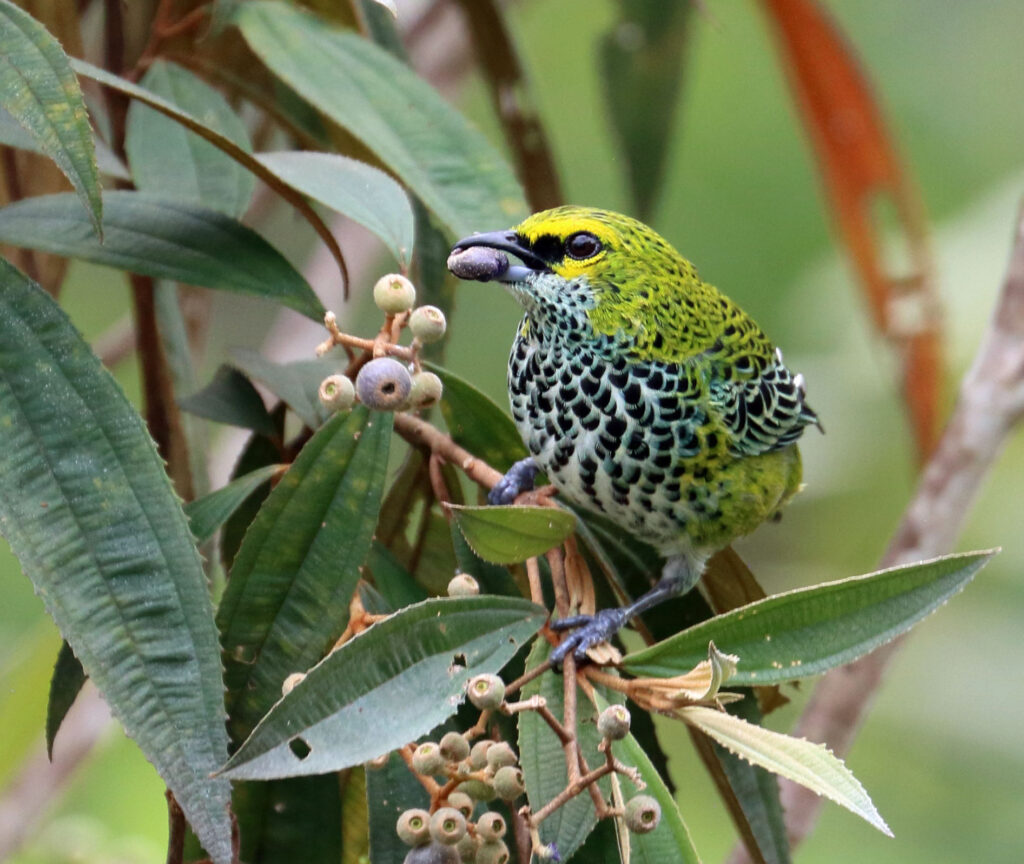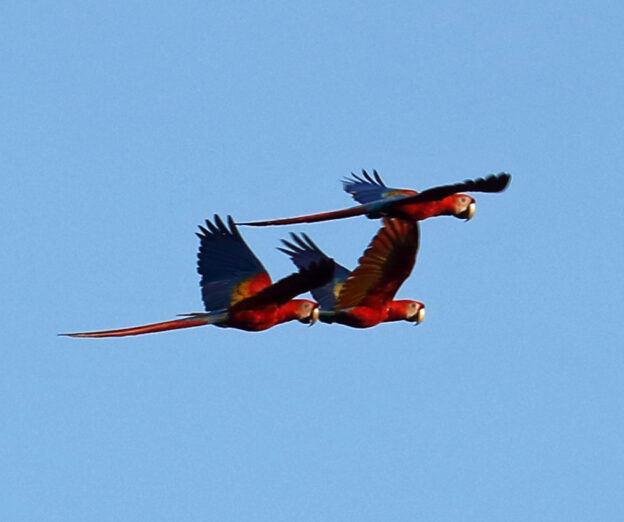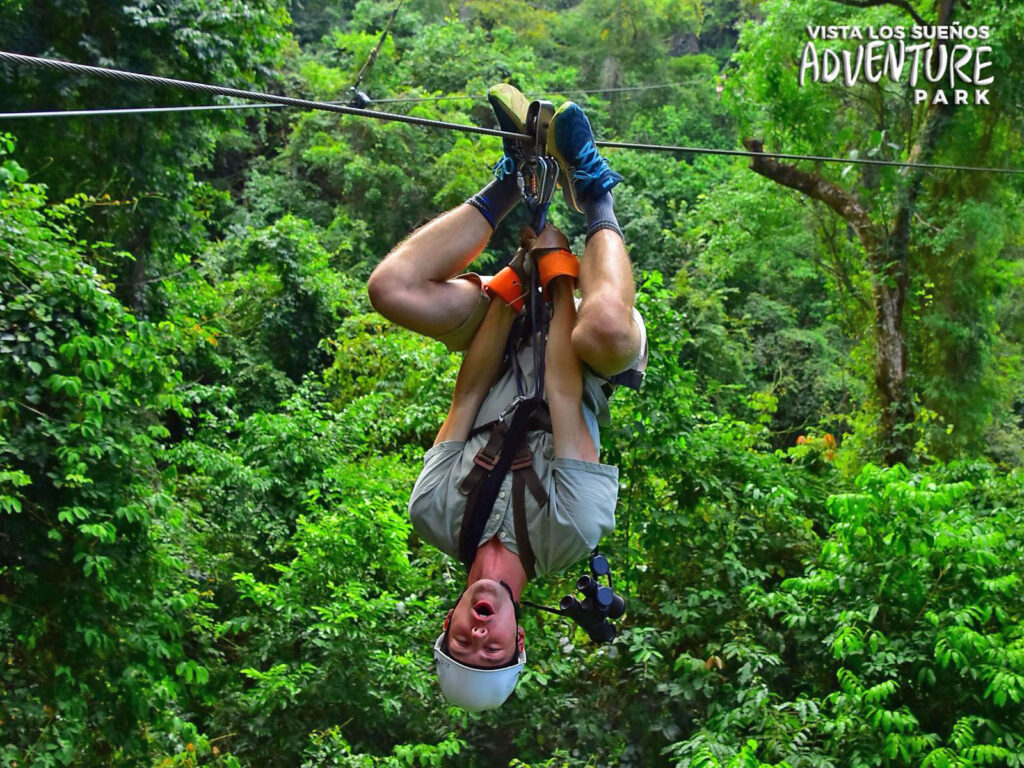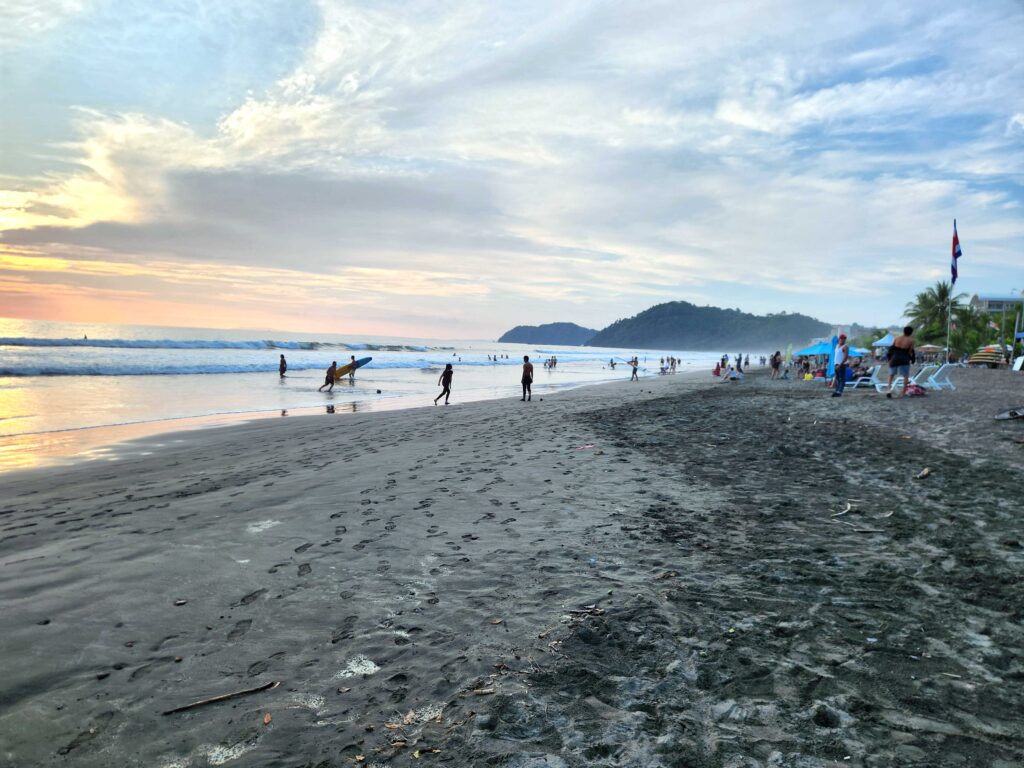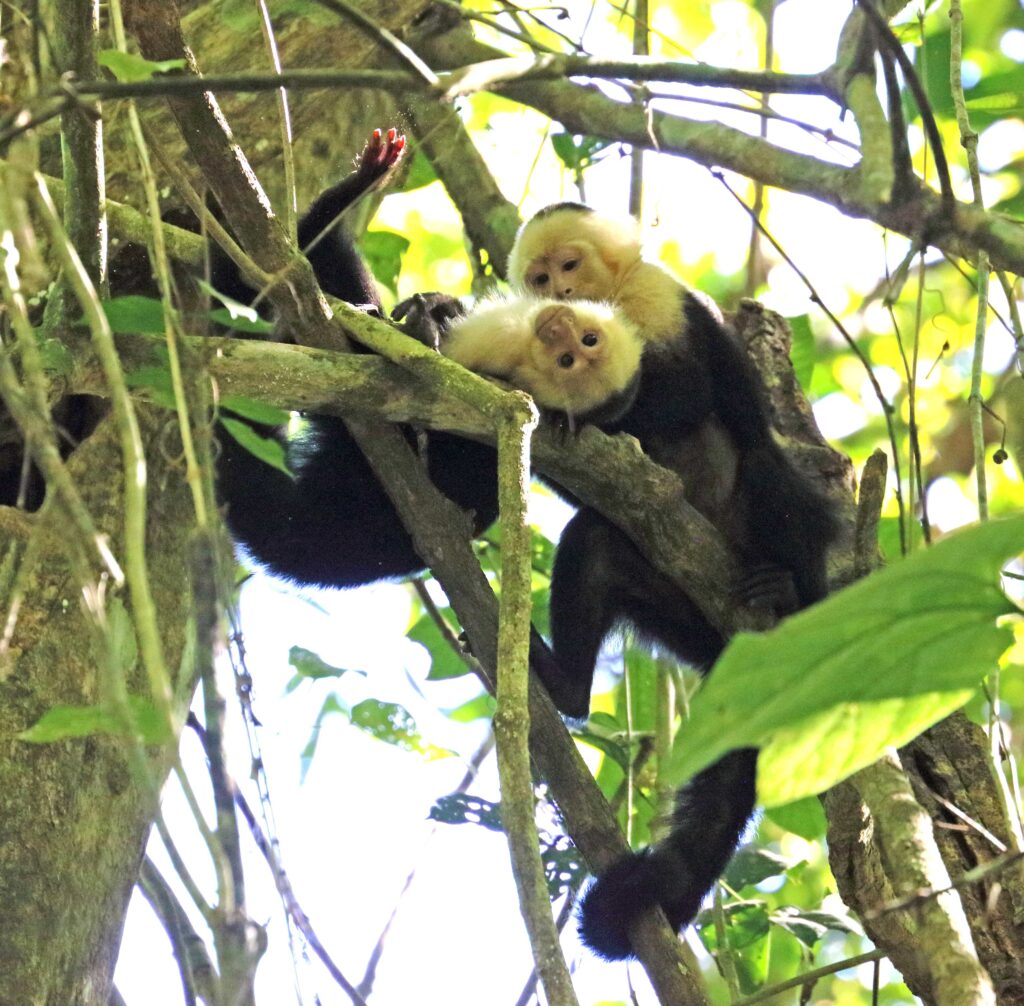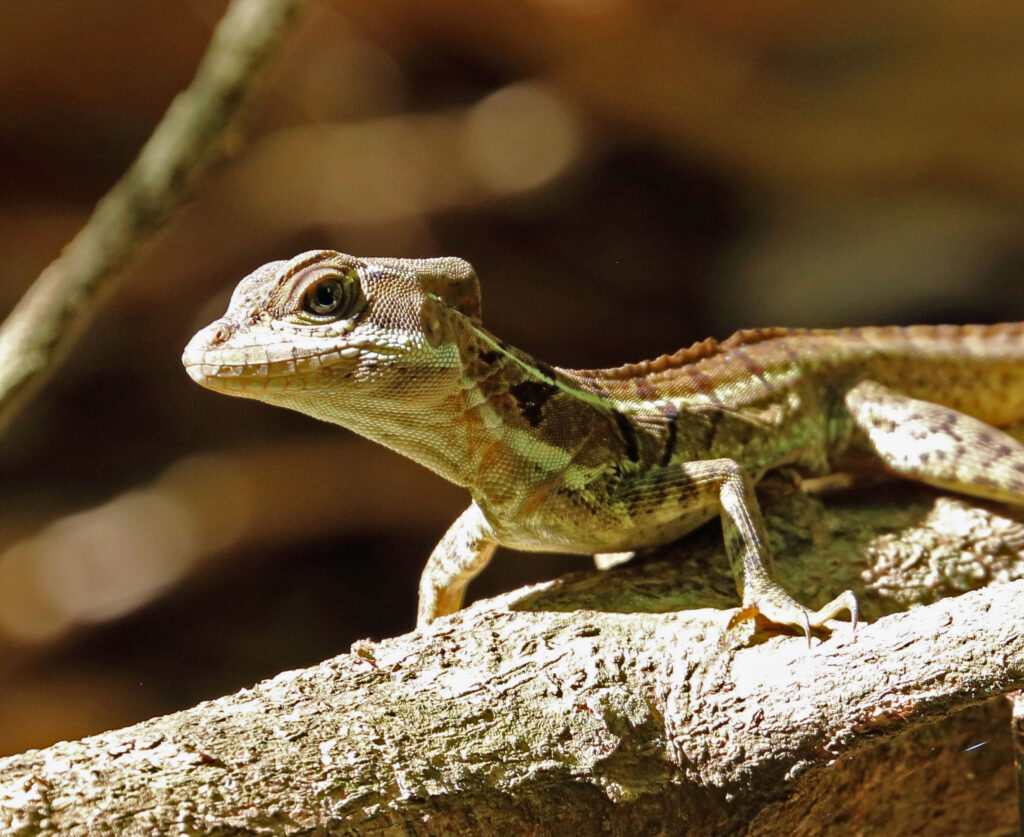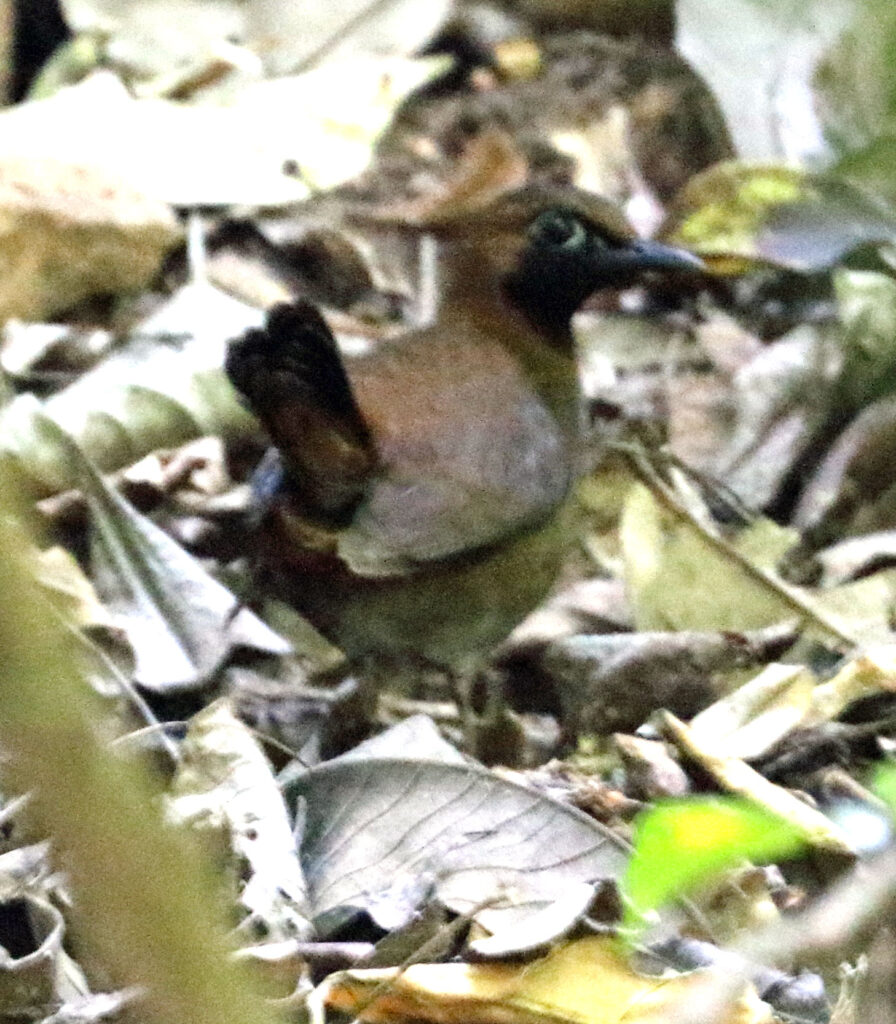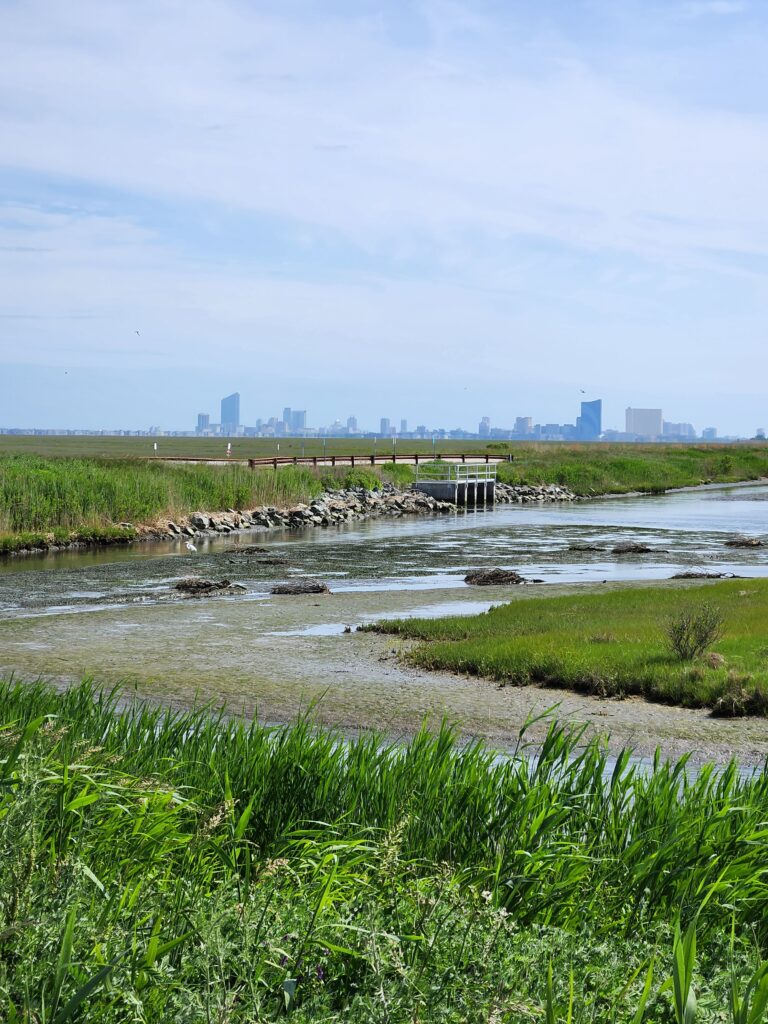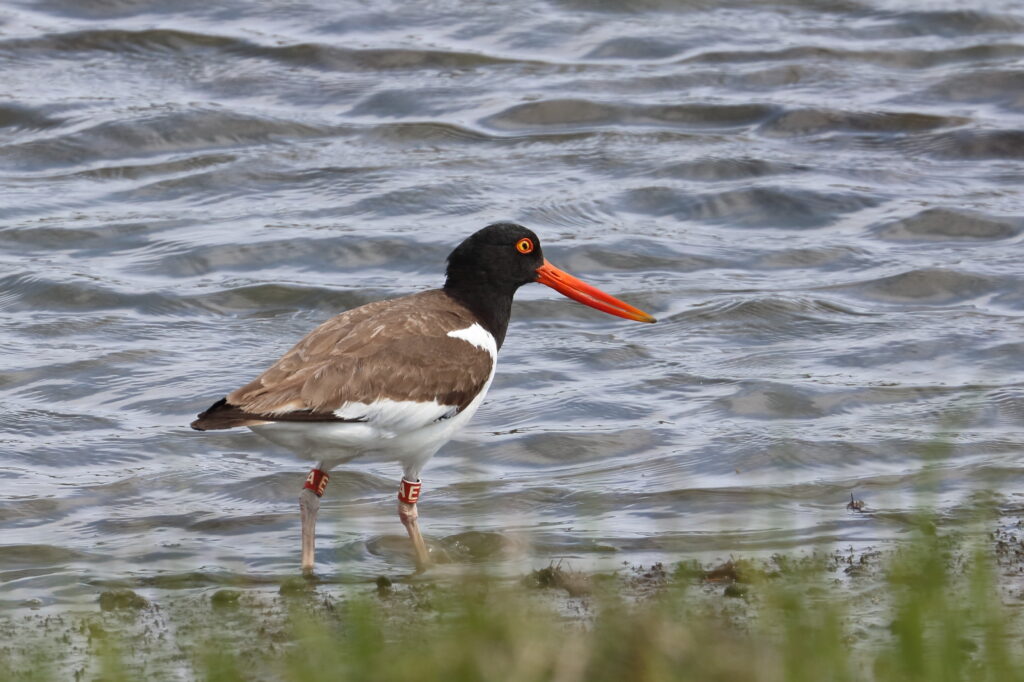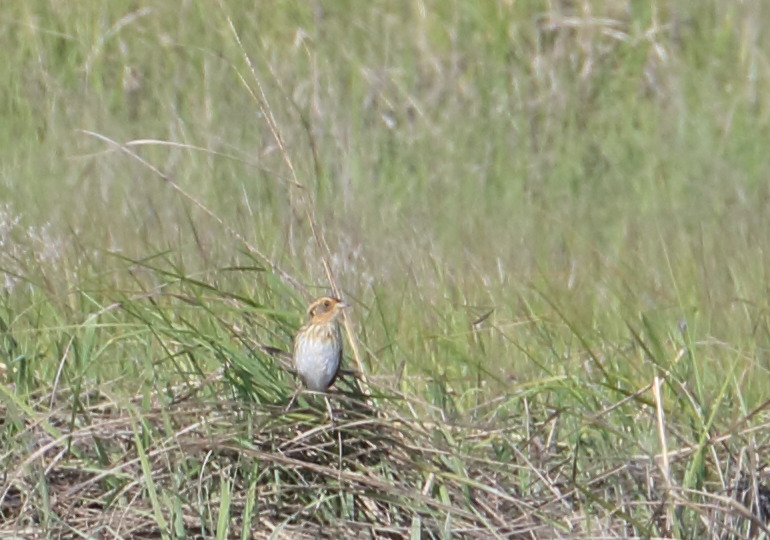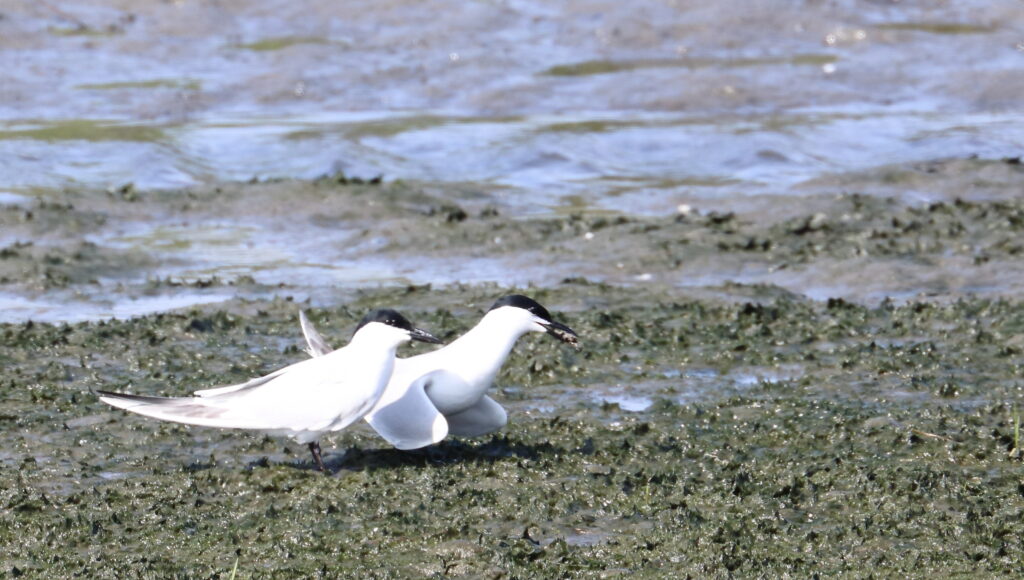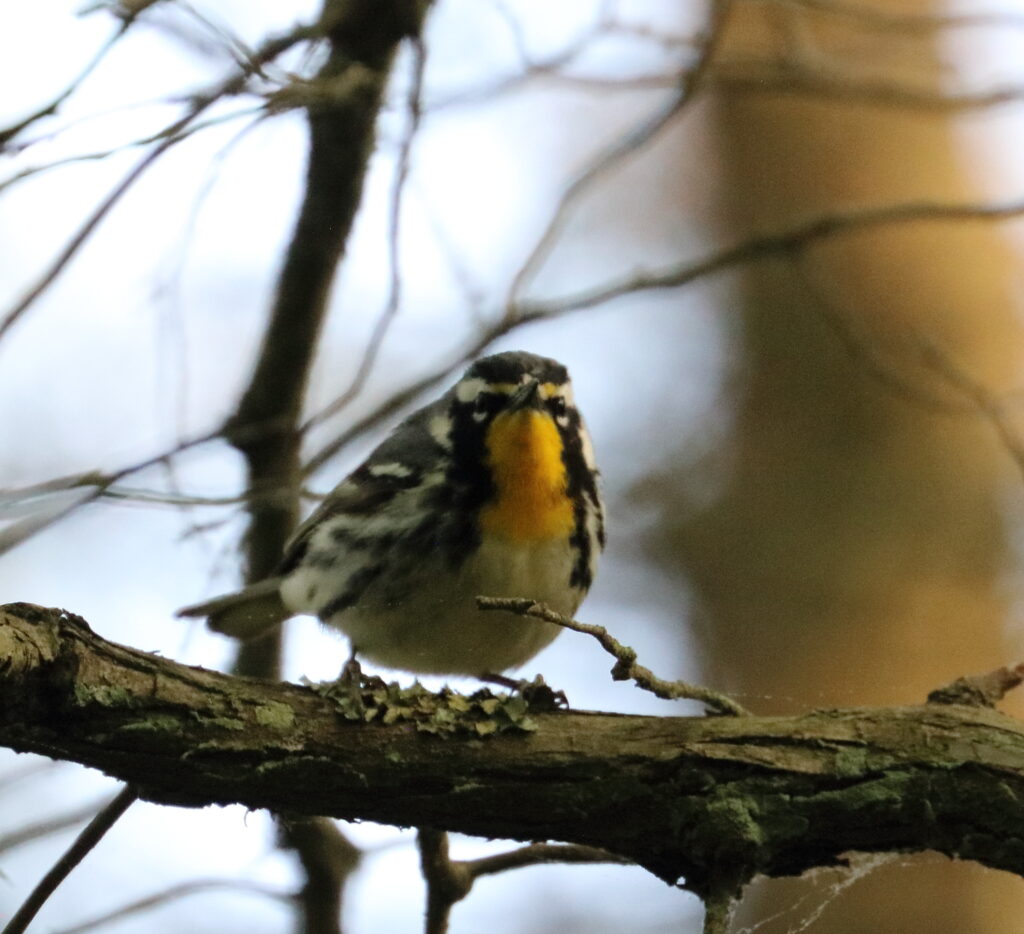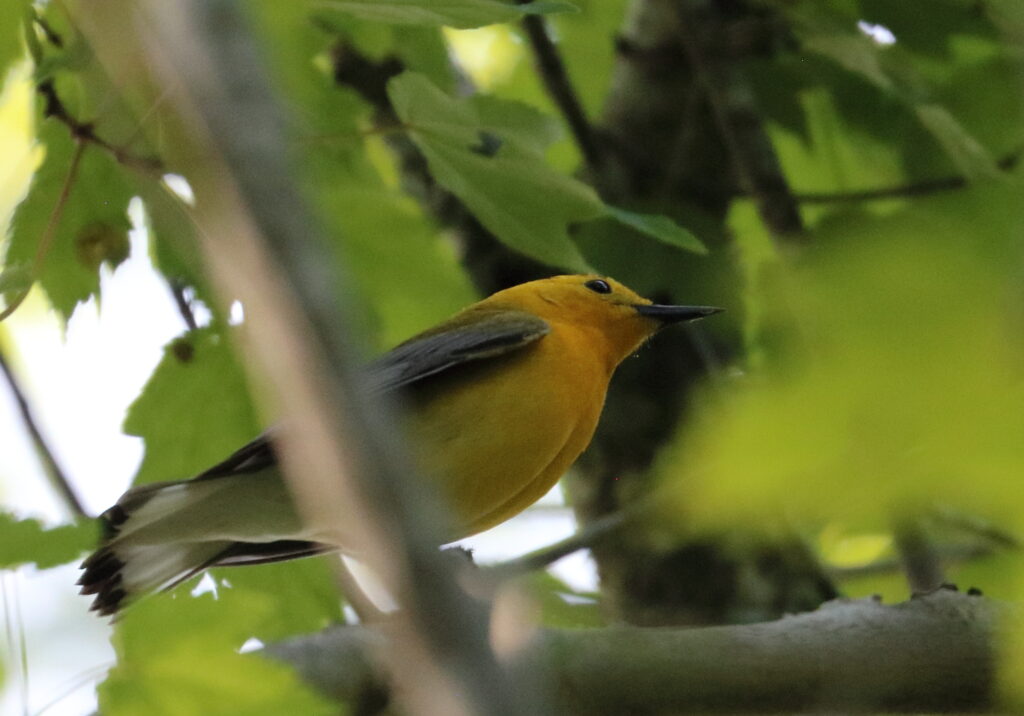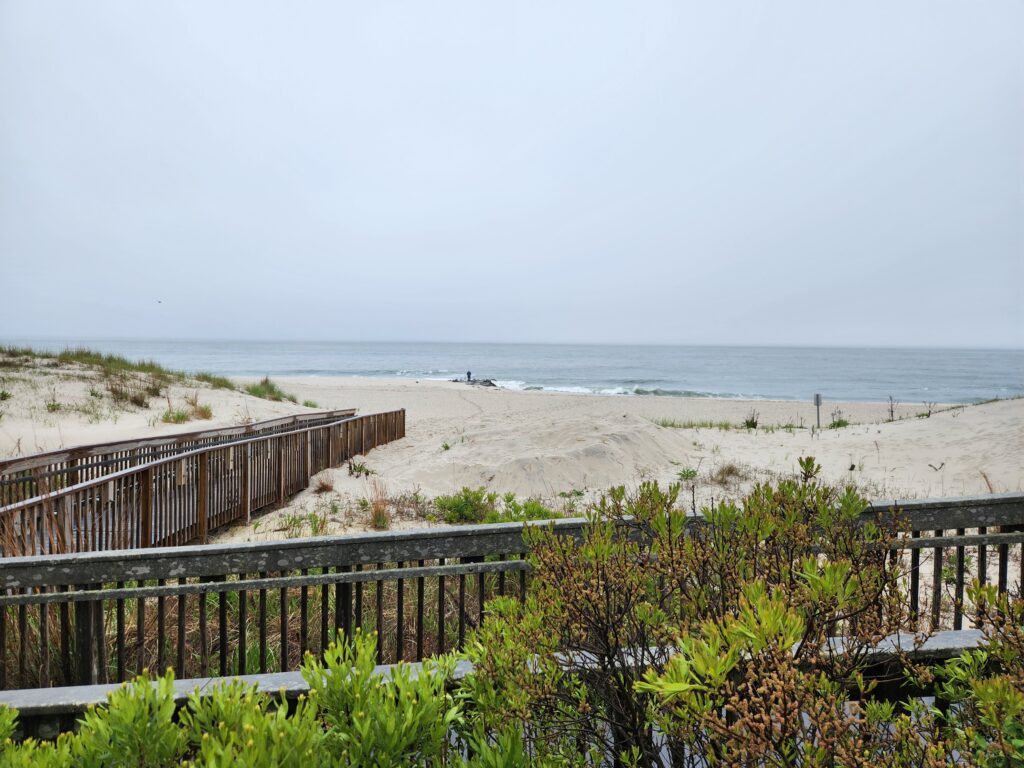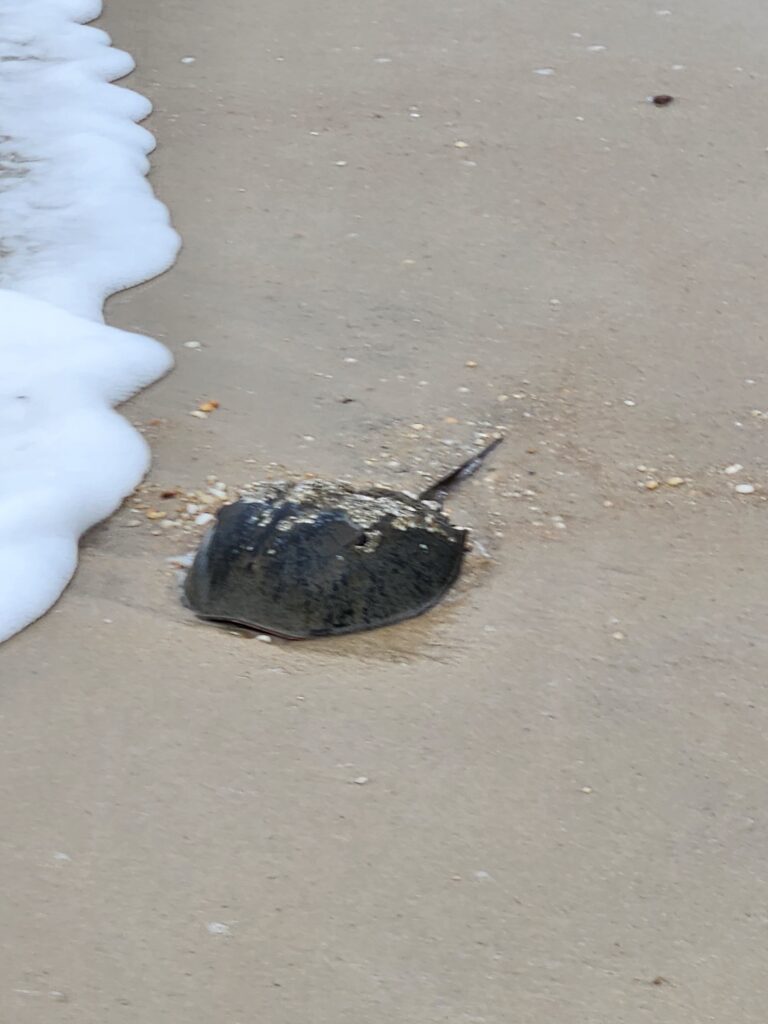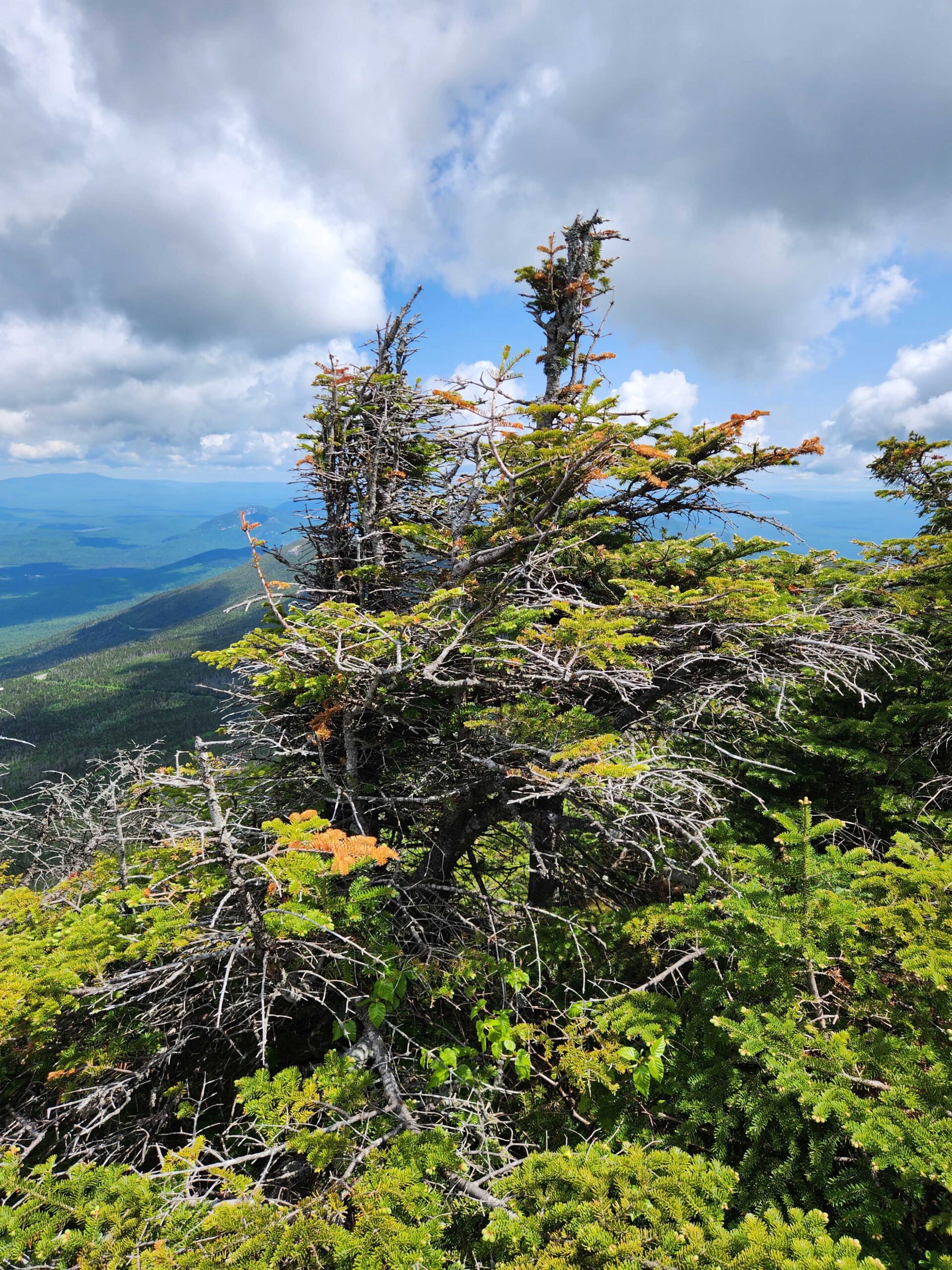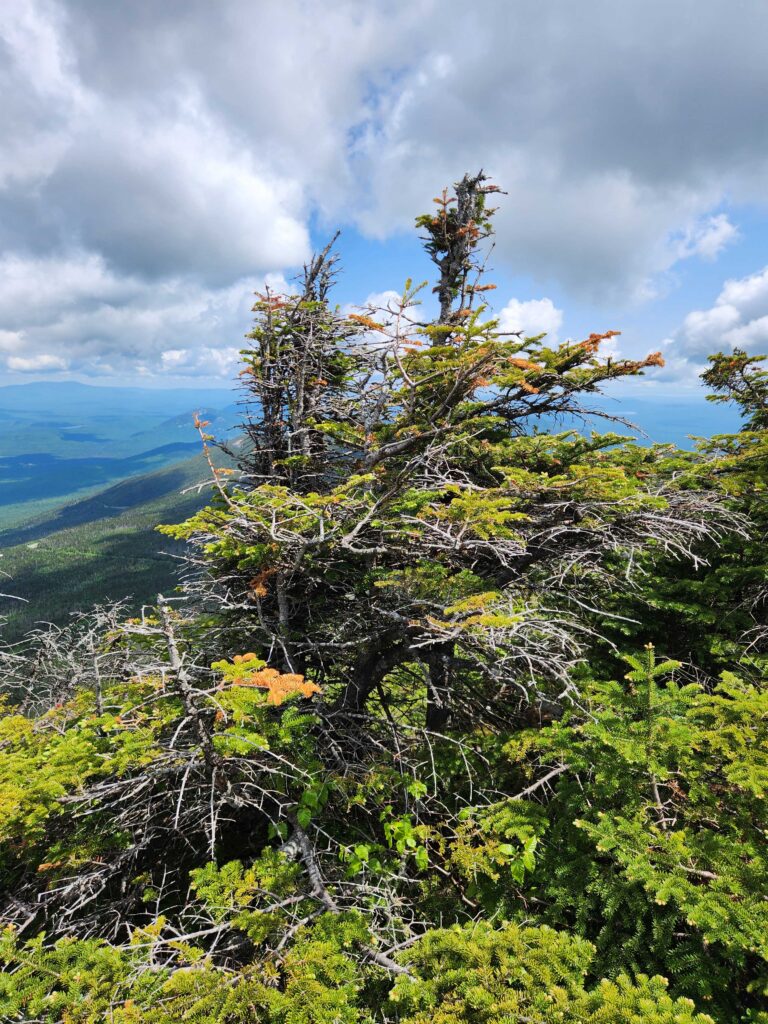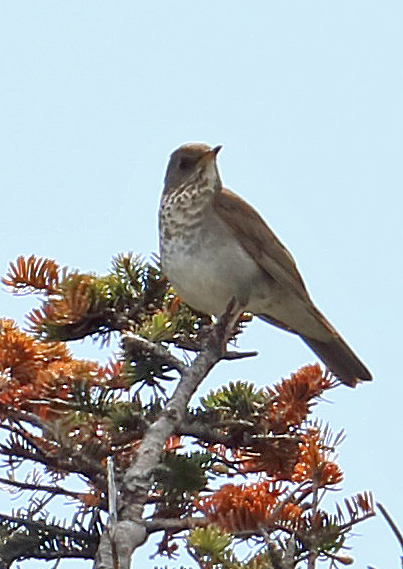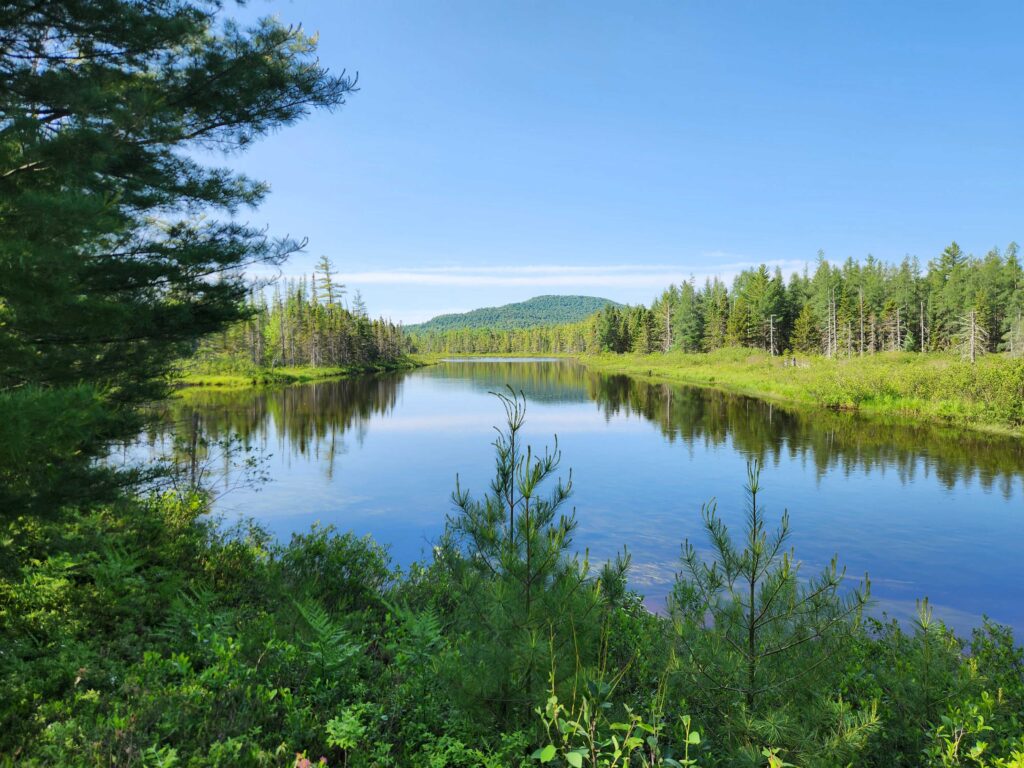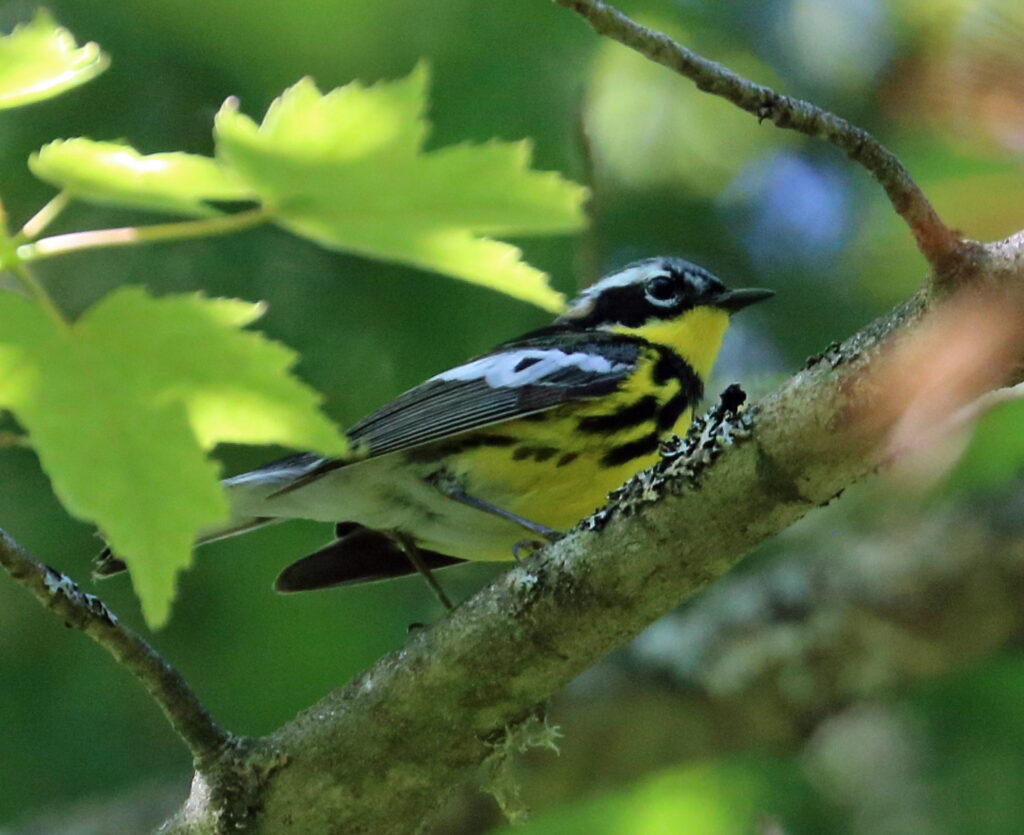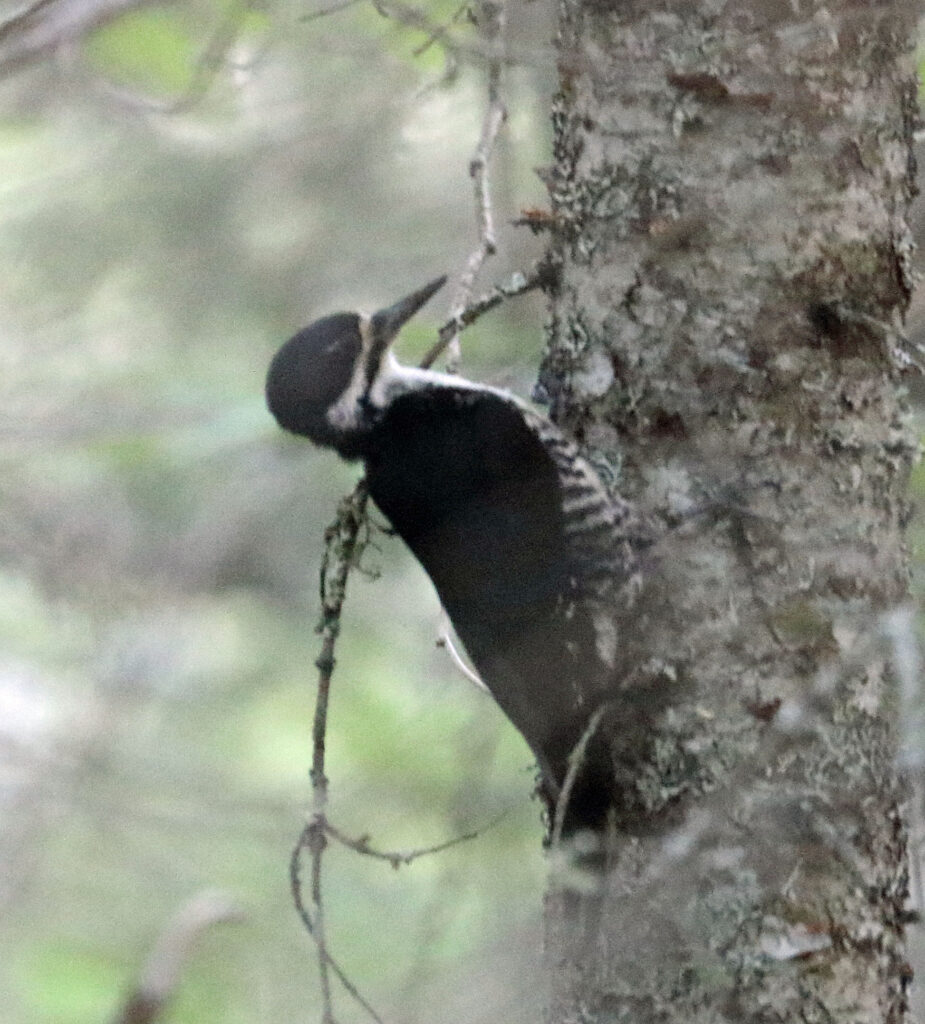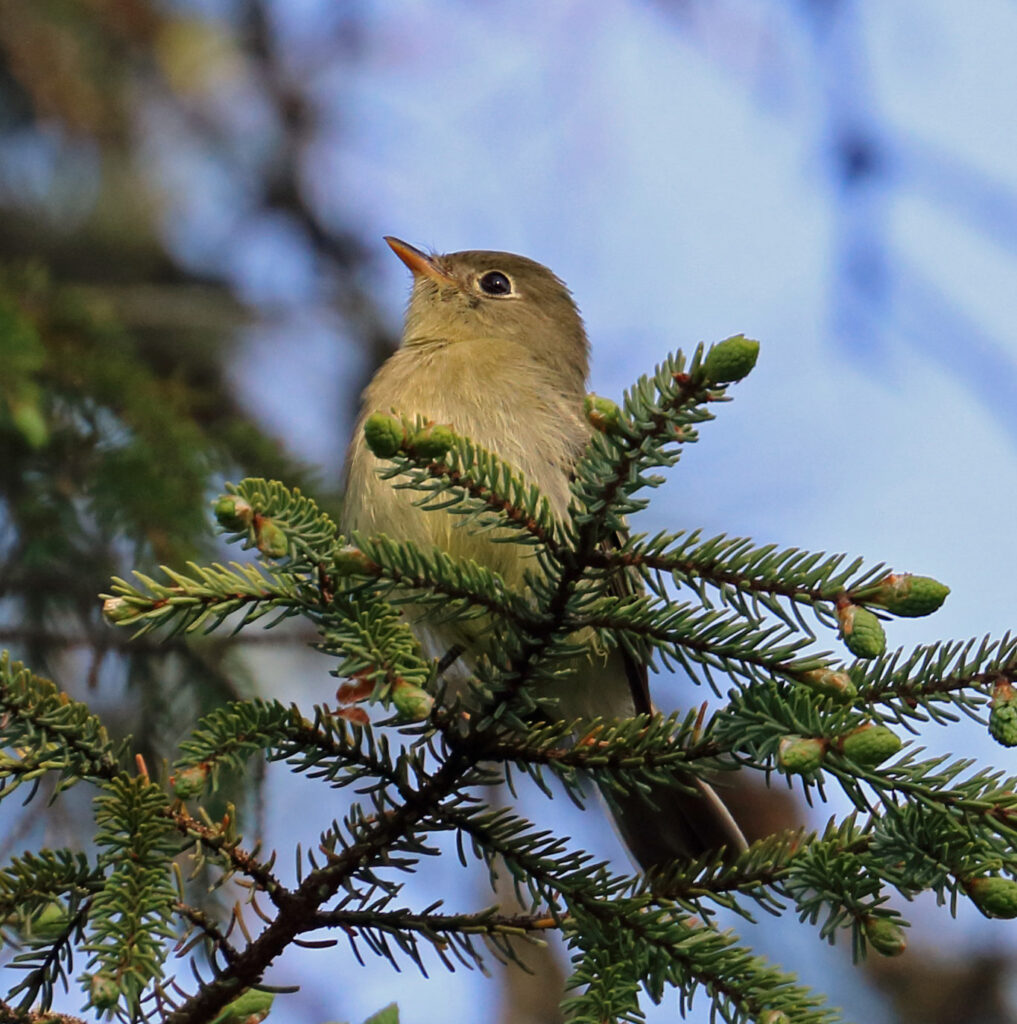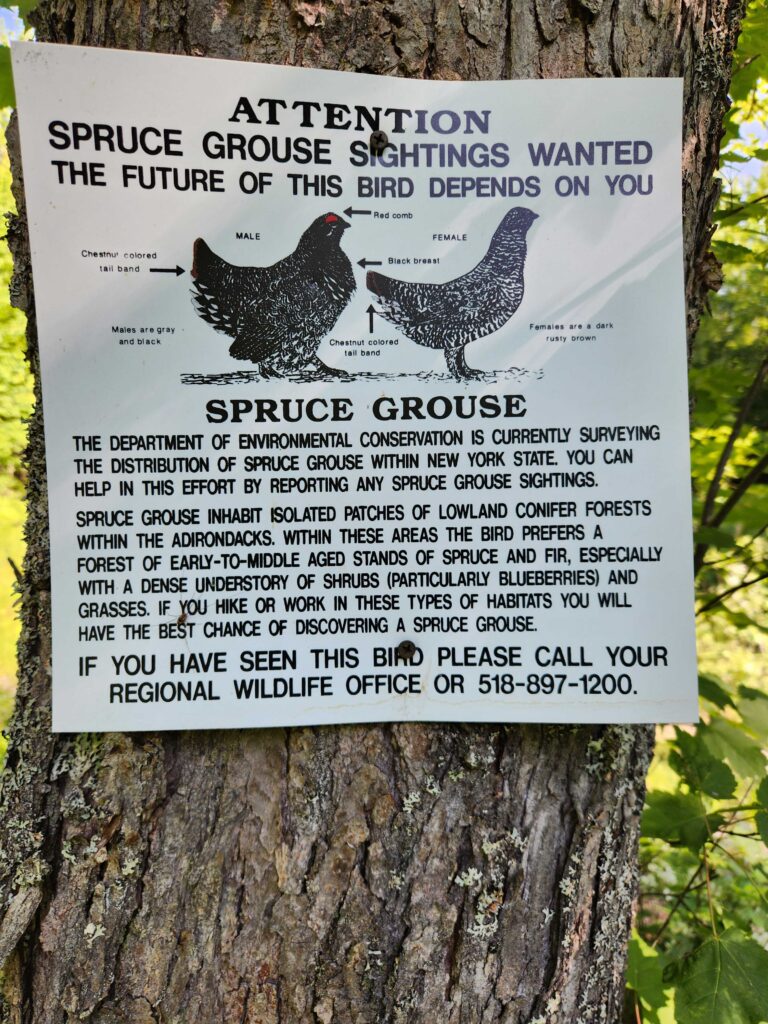Braden and I write FatherSonBirding in the hopes of sharing the wonders of birds and birding, and the urgency to protect them. We do not accept advertising or donations, but if you’d like to support our work, please consider buying *NEW* copies of some of Sneed’s books—First-Time Japan, for instance, or my recent Orbis Pictus Award winner, Border Crossings. We appreciate your interest and hope you will keep reading!
A low growl emanated from the dense jungle up the hillside from the highway, stopping me in my tracks. The sun hadn’t even thought about rising yet, since I’d woken up before 5 a.m., but some animals were awake, including the Crested Owl I’d just heard call from the rainforest. I laughed in disbelief as I stood on the side of the highway, looking up the hill. While I could not see the animal, Crested Owl was one of the country’s largest owl species and one I’d been hoping for but not expecting to get during my time here. And yet here one was, singing for me as I began my trek from El Chontal (my hostel) to the Río Rincon Bridge in extreme southwestern Costa Rica.
The walk from the hostel to the bridge was about an hour, and as I plodded along the highway, I could hear and feel the forest waking up. Little Tinamous and Great Curassows called in the dark, and about half an hour before dawn many other species of birds started up. Immense roars echoed from high in trees as male Mantled Howler Monkeys welcomed the sun into the sky, and I eventually arrived at my destination, the bridge spanning the Río Rincón. Nearly every birder visiting the Osa Peninsula stopped here, albeit usually with a vehicle and not on foot. The bridge offered great views of mangroves to the east and rainforest to the west, as well as a wide open vista from which to watch parrots of many species leave their roosts in search of food. The primary reason birders stopped here, however, was for a specific, critically-endangered bird species: the Yellow-billed Cotinga.
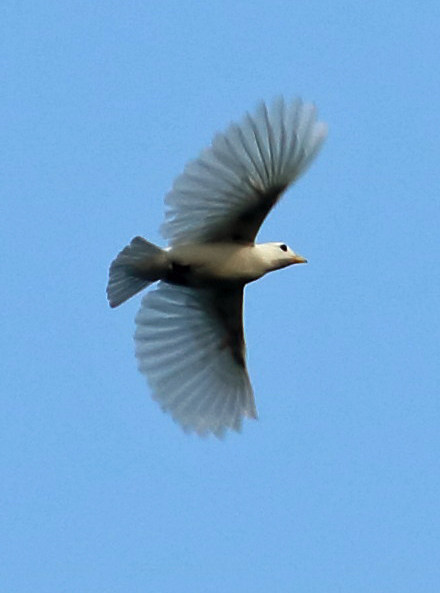
Cotingas are a strange, remarkable and hilarious group of birds. These plump birds feed primarily on fruit and come in a wide variety of shapes and colors, including tangerine orange, like the Andean Cock-of-the-rock, shadow black, like the Bare-necked Umbrellabird, or electric blue, like the Turquoise Cotinga. The family features some of the world’s weirdest species, like the monk-like Capuchinbird, and the loudest birds in the world, the bellbirds, one of which resides in Costa Rica (and will be my target for my final weekend trip in this country, so stay tuned!).
Yellow-billed Cotingas are angelic white, and are endemic to southwestern Costa Rica and extreme western Panama. They live in extensive lowland rainforest and mangroves, and thanks to habitat decimation, are largely restricted to the Osa Peninsula, one of the country’s wildest remaining areas. This species was one of the primary reasons that I had requested to skip classes this week and visit this far-away peninsula, and the Río Rincón Bridge was the most reliable place to see them.
By the time I arrived, barely before dawn, the birds were already active. Hordes of parrots, from the pint-sized Orange-chinned Parakeets to the chunky Red-lored Parrots to the spectacular Scarlet Macaws, flew over me towards distant locations. A Bare-throated Tiger-Heron hunted for fish in the river, and another one, a juvenile covered in its namesake black and orange stripes, watched from a nearby tree. The sandy river island hosted several Spotted Sandpipers, a Willet and a Northern Jacana—the first I’d ever seen. Jacanas have massive feet which they use to walk atop lily pads, although there weren’t any lily pads in sight here. Flocks of swallows and swifts wheeled overhead, and I spotted a few Fiery-billed Aracaris swooping across the river, their flame-colored bills shining in the sun.

As I stood on the bridge, unsure of where to look for the cotingas, I heard a distinctive song from a nearby tree. The “bouncing-ball” call sounded exactly like a Wrentit, a bird native to the chaparral of California, which had never been recorded in Costa Rica and probably never will be. I knew exactly what it was, though, since I’d studied the song the night before and noticed the resemblance it had to a Wrentit. I walked over to the tree and whipped out my speaker, playing the call right back at the bird. Then, a large, blue and red bird flew in and landed several dozen feet above my head in clear view: Baird’s Trogon. This had also been one of my chief targets on the Osa, given that it was difficult to find nearly anywhere else in the country, and I snapped some poor photos of it before returning to my cotinga watch. After about fifteen minutes, that watch paid off, as a mottled gray female cotinga flew over, landing briefly in a tree in front of me before disappearing in the foliage. “Well, that wasn’t the view I’d hoped for,” I said to myself, a bit disappointed but still relieved that I’d seen my target species. The cotingas weren’t done yet, though. Over the next hour and a half, I spotted seven more of the birds flying over, many of them strikingly-white males. I got a decent picture of one in flight, too.

After two hours of great birding, I walked back along the highway to my hostel. From there, I packed up and caught the bus down to Puerto Jiménez, the largest city on the Osa (which is still quite small). I found a small soda (the name for any number of small, family-owned restaurants in Costa Rica) and waited there for about an hour before a tiny, run-down van pulled up in front of it at 11. “Dos Brazos?” asked the lady driving it, and I nodded, throwing my bag in the van and climbing up after it. The interior of the van was in rough shape, although the seats were comfortable, and I taught the lady’s young son how to use my binoculars as we rattled up dirt roads towards the “town” of Dos Brazos, hidden deep in the rainforest.
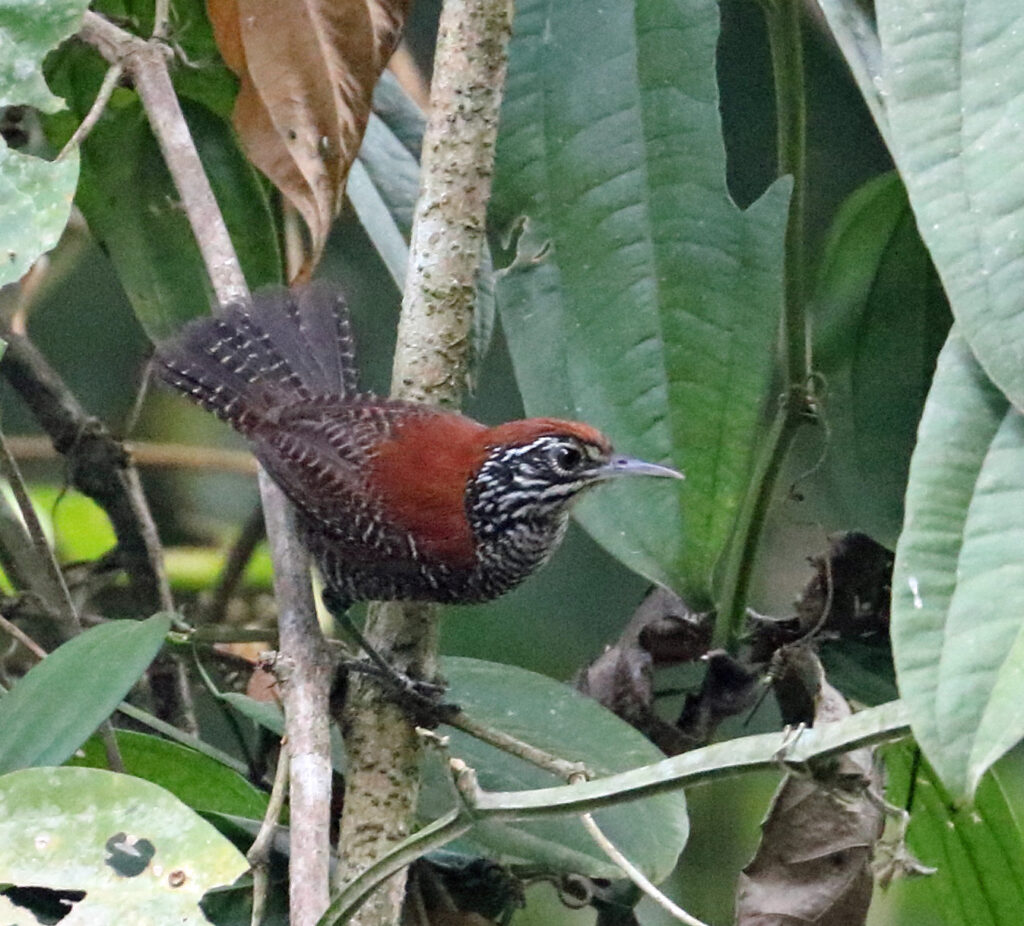
The woman let me off in front of the reception house for the Bolita Rainforest Hostel, where an American greeted me. “Welcome to Bolita! The hostel is a 30-minute hike that way,” she pointed up into the jungle. So, I set off, my heavy pack on my back. I spotted a pair of Buff-rumped Warblers next to a creek I had to cross, and eventually arrived at the open-air hostel, caked in sweat. Another American and several volunteers from all over the world greeted me cheerfully, showing me to my “room”, an outdoor bed with a mosquito net over it. There was no “inside” at Bolita, except maybe the supply closet, which hosted half a dozen roosting bats on its walls. After I settled down, Pascal, an older French volunteer, noticed my binoculars.
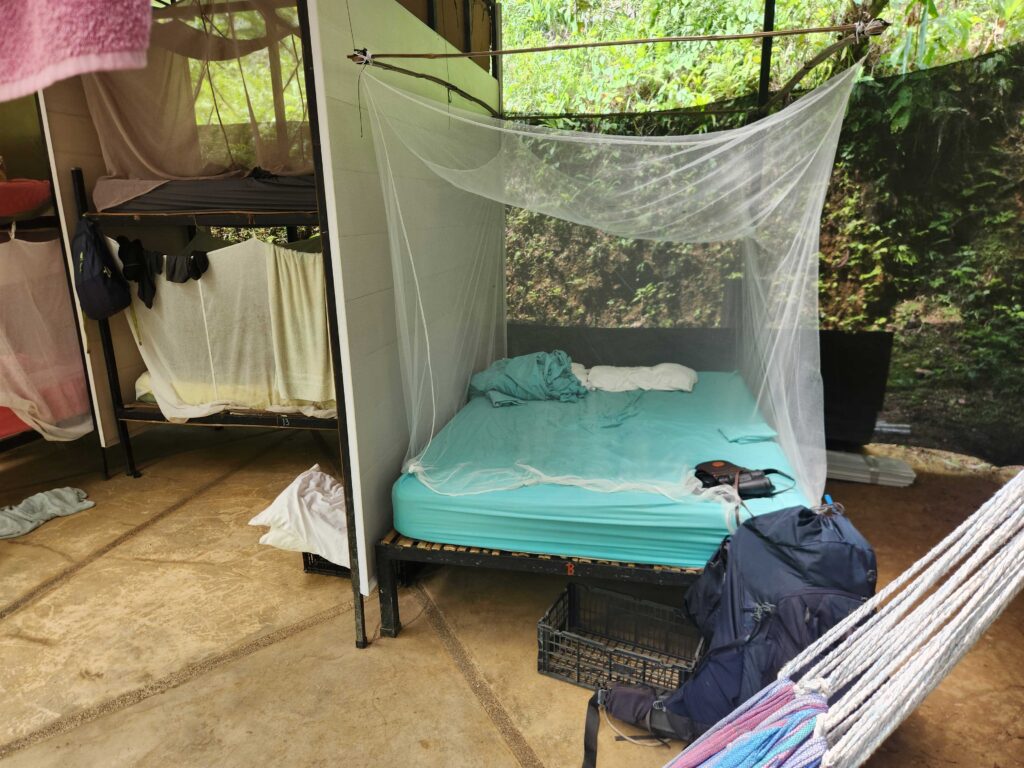
“Are you a birdwatcher?”
I nodded, and she proceeded to pull out a faded “Birds of Costa Rica” book, flipping it open to a page with small, colorful birds on it. She pointed to the bird that just so happened to be my number one remaining target for the entire trip: Orange-collared Manakin.
“I saw these guys here! The males all dance for the females at places called leks, and I found a lek on one of the hostel trails. I can show you if you’d like!”I nodded profusely—fate had somehow delivered to me the perfect opportunity to see the bird I wanted to see most here. Soon, Pascal led me and a few other interested guests up the “Big Banana Trail.” After twenty minutes of hiking, we rounded a corner and heard claps from the nearby trees. Pascal waded a few feet into the foliage off the trail, and pointed. There they were, tiny, football-shaped birds with sunset-colored collars and tiny black caps, like the White-collared Manakins I’d seen in Sarapiqui but with fiery rather than white throats. We enjoyed them for fifteen or minutes or so before everyone else wandered back down towards the hostel. I decided to poke around the trails a bit longer—and I’m glad I did.
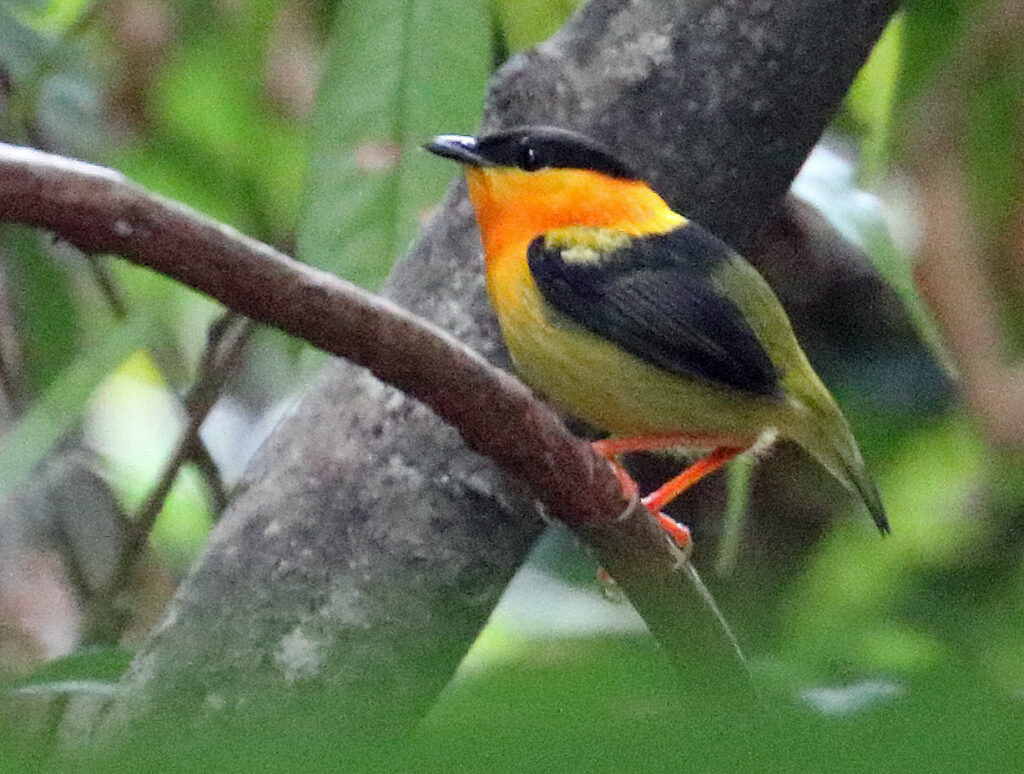
Almost immediately, I heard the loud, repeating call of a wren coming from a tangle near me, and with a little verbal coercion, I was able to spot the culprit: a Black-bellied Wren, another southwestern Costa Rica specialty bird. This wren happened to be the beginning of a large mixed flock and I spotted several more wrens as well as antshrikes, antwrens, a foliage-gleaner, and a Little Tinamou, a hard-to-see forest bird, feeding right on the trail in front of me. I stopped at one lookout and watched as the birds came to me: parrots, flycatchers, hummingbirds and more. Highlights included a female Thick-billed Seed-finch, a tiny bird with a massive bill; an Olive-sided Flycatcher, a bird that winters in South America and summers in the boreal forest of Montana and Maine; and a Purple-crowned Fairy, a flashy, usually-arboreal hummingbird that steals nectar from flowers rather than pollinating them. Extremely satisfied with this mid-day birding, I headed back to the hostel to watch the sunset.

I found a nice little bench overlooking much of the rainforest and quickly realized that even the hostel had great bird activity. Piratic Flycatchers, Scarlet-rumped Tanagers and Bananaquits flew around me, and about an hour before dusk, I spotted another bird that blew me away: another cotinga, this one the color of the sky. I’d looked for Turquoise Cotingas three days earlier and completely missed them, and yet here they were, delivered right to my doorstep in all their blue and violet glory. I had gotten, quite simply, every bird I’d wanted to see on the Osa Peninsula. And I still had one morning left!
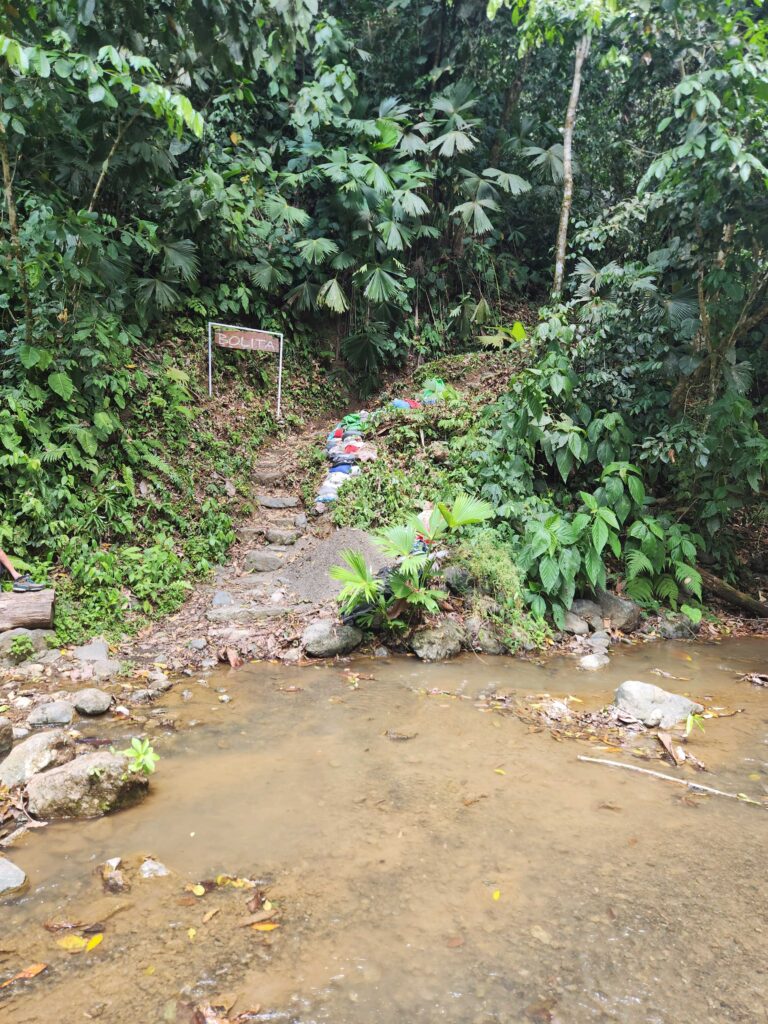
That morning was spent exploring more of the trails behind the Bolita Rainforest Hostel. With no real targets, I just set off into the jungle, hoping to discover something unexpected, and I did! I spotted three more lifers, including Black-crowned Tityra, Black-cheeked Ant-tanager (the only species completely endemic to the Osa Peninsula) and a Northern Black-throated Trogon, which was one of four trogon species I reported on my hike. I heard dozens of antbirds, antwrens, antshrikes and antthrushes, spotted groups of Scarlet Macaws flying high above me, and watched the sunrise over the misty hills stretching all the way out to the Pacific Ocean. I’d seen some beautiful places in Costa Rica so far, but none had been so wild as here. From one vantage point, I could see no signs of human habitation—just forest and sea. Even for a country that has done so well protecting its environment, places like this are rare, and I’m so happy I got to experience it.
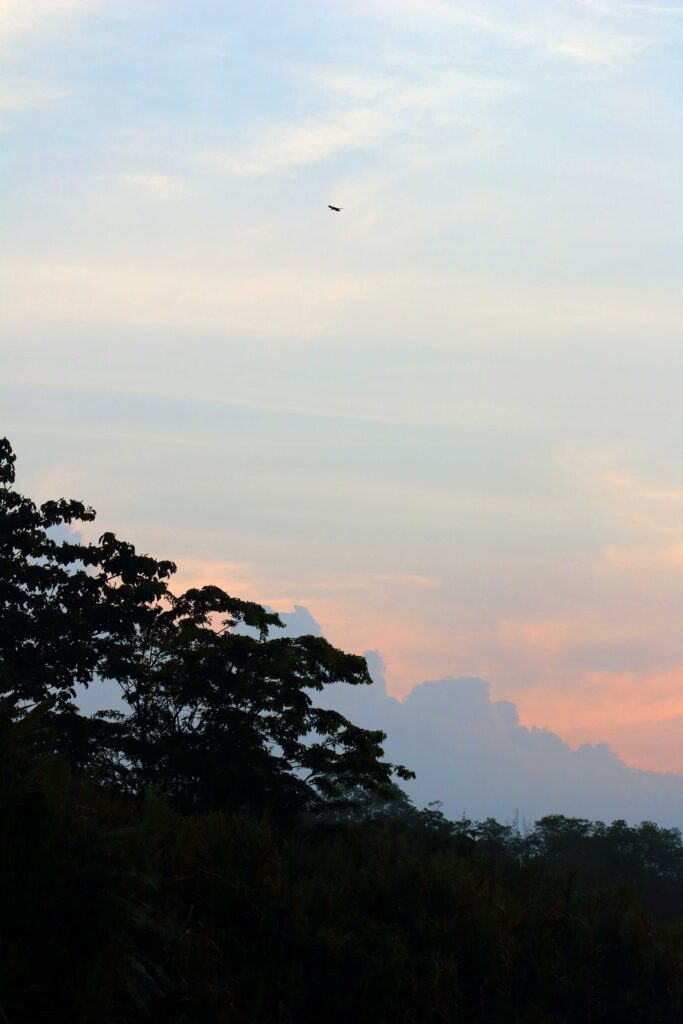
You can experience it too! Whether you want to see the jungles of Central America, like me, or the snow-capped peaks of the Alps or the Andes, the castles of Europe, the hubbub of Tokyo or the grasslands of the Serengeti, you can, with the help of the Gilman Scholarship! I’m sure I sound like a broken record, but it’s because it’s true—the Gilman can help low-income college students reach far away destinations to study abroad with just a simple application! I urge you to apply today, so you can have a life-changing, international experience during your college years, like me!


